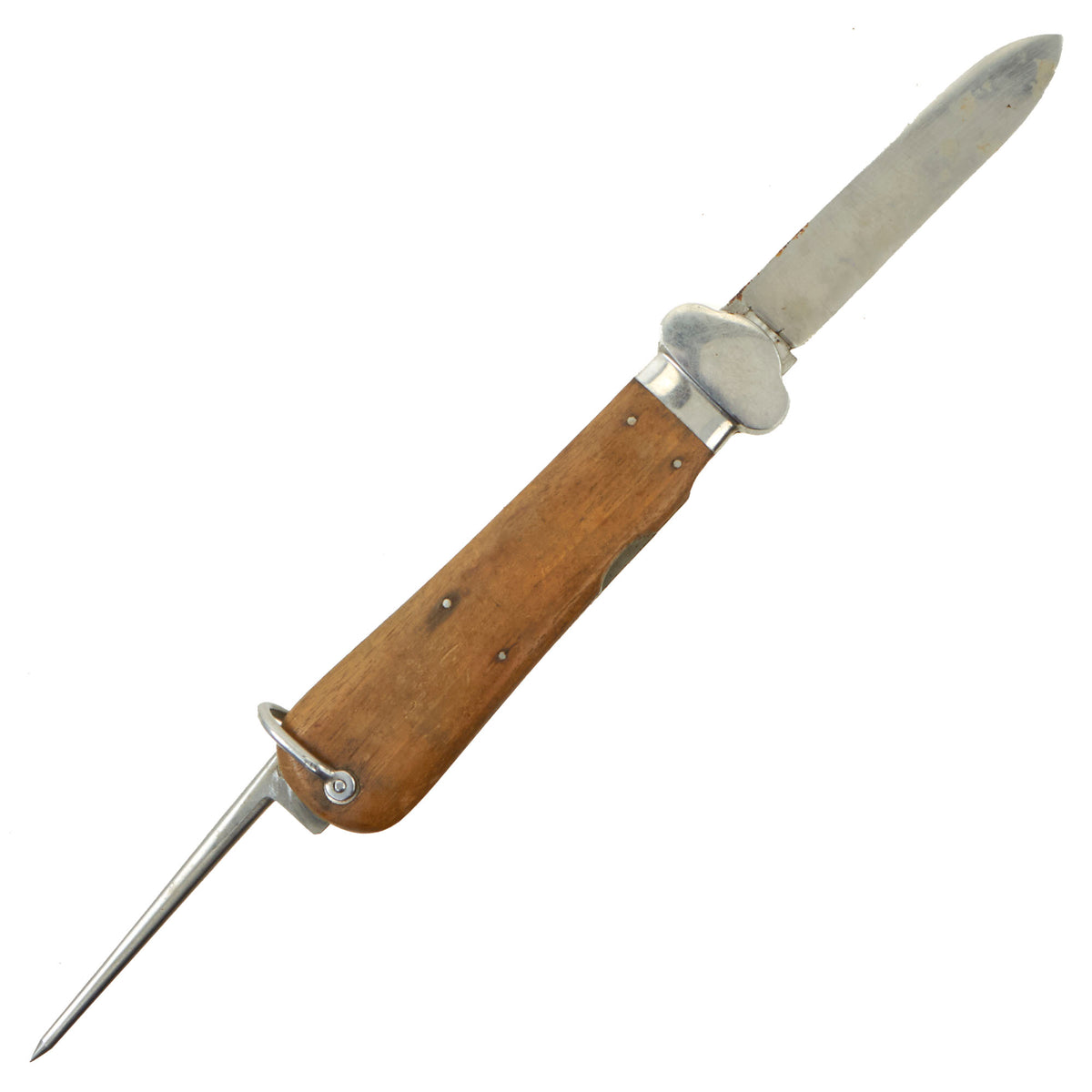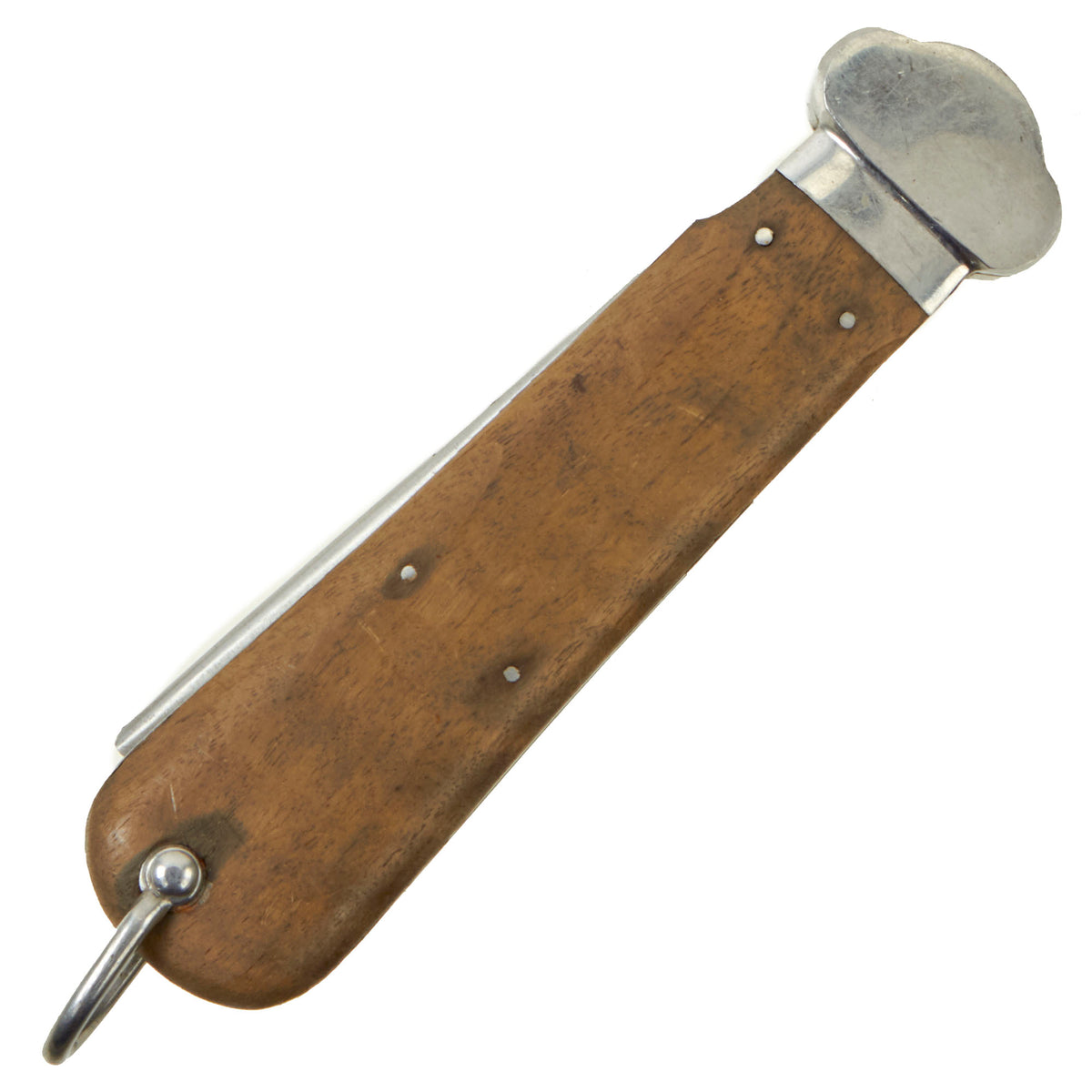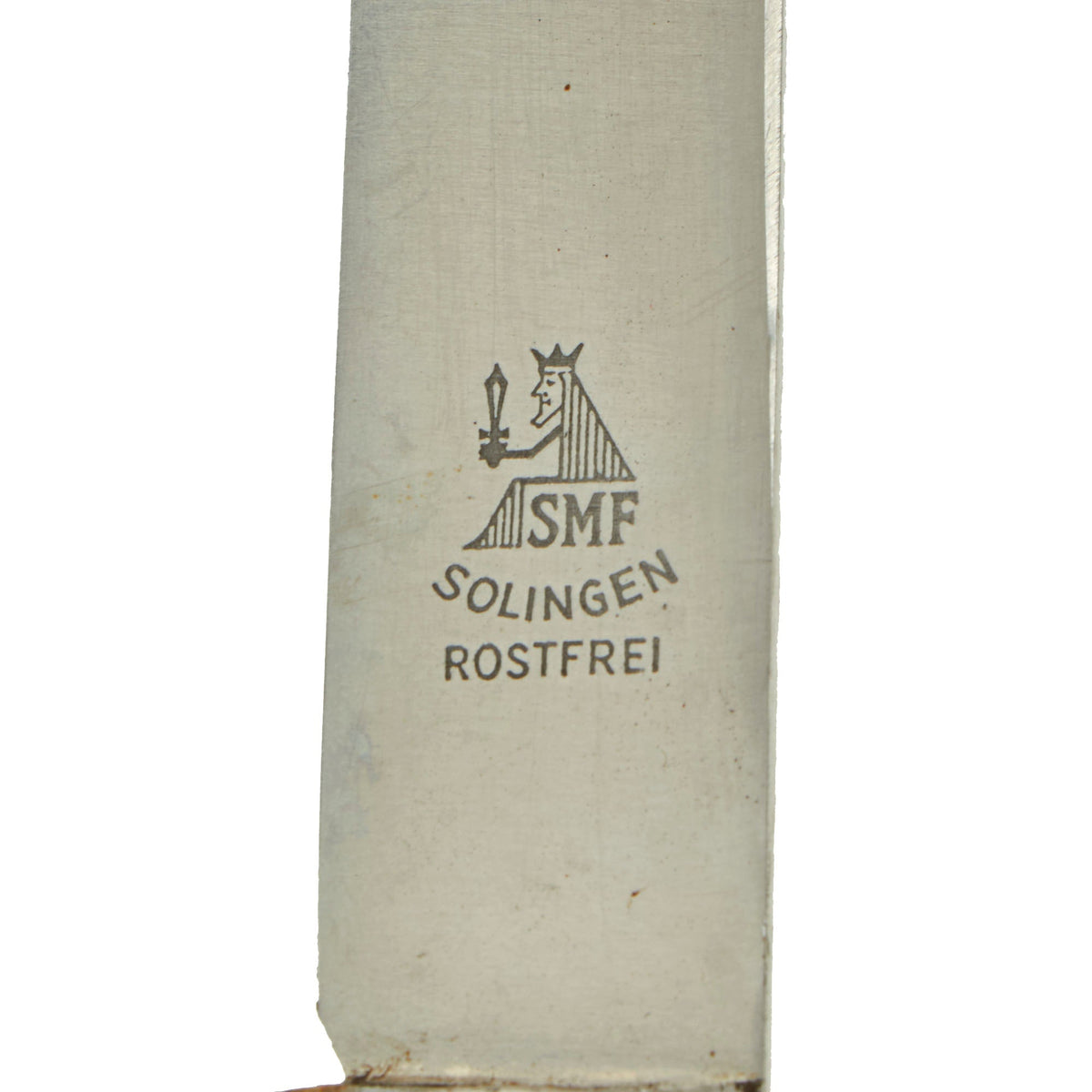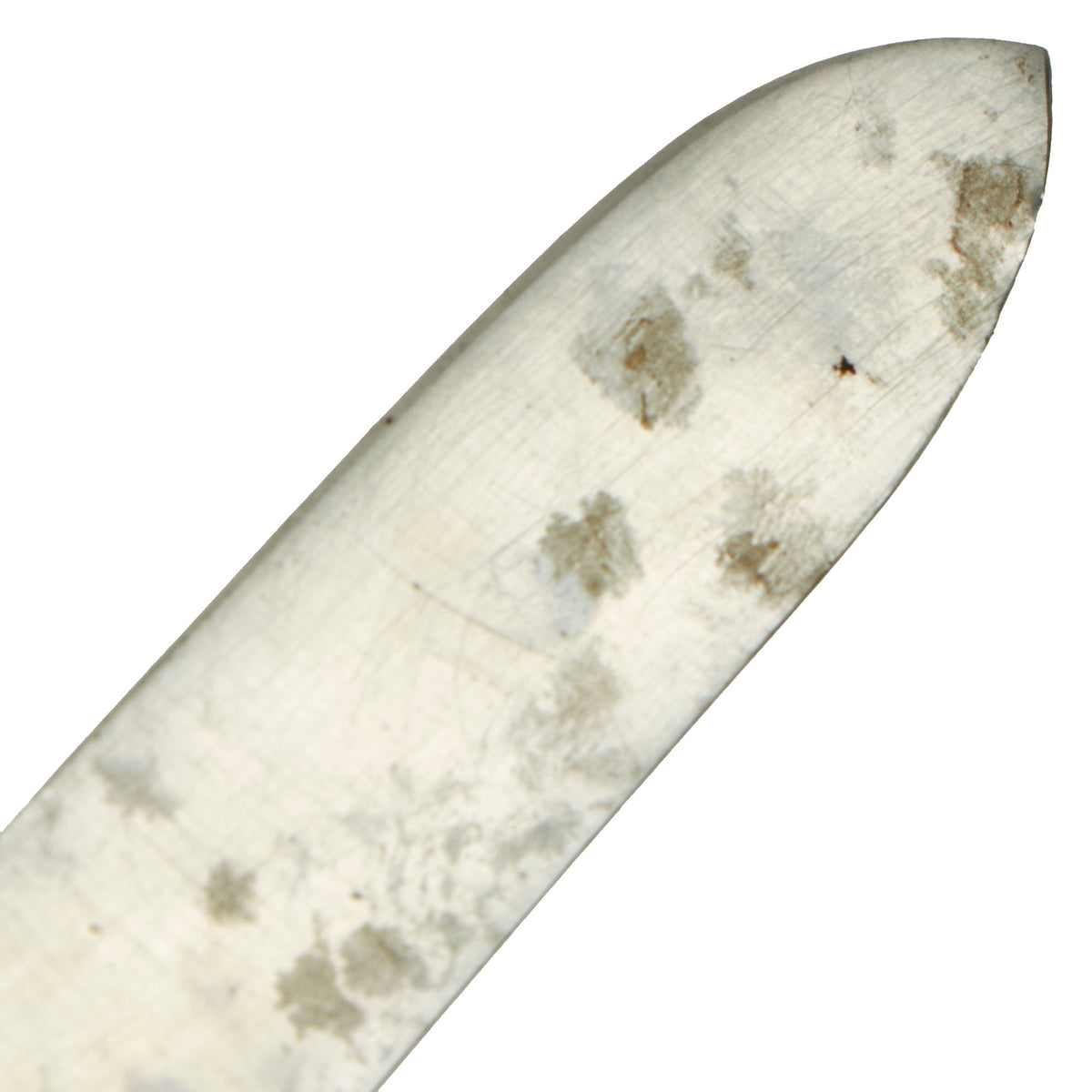Original German WWII Luftwaffe Gravity Knife by SMF with Missing Blade Latch – Waffen Proofed Original Items
$ 495,00 $ 148,50
Original Item: Only One Available. This is a very good condition example of an early-war produced Type I version of the legendary Luftwaffe Fallschirmjäger-Messer, or German air force paratrooper knife (FJM or FKm). It does however have a significant fault, in that the blade latch is missing, due to the somewhat delicate leaf spring it is attached to having broken off by the rivet. This is a very common thing to happen to these knives, as they were really not designed for long term use, and eventually metal fatigue often causes the springs to crack.
This example was produced by Solinger Metalwaren-Fabrik Stöcker & Co. GmbH, also known as SMF, who were one of the major producers of this knife during WWII. Their “Seated King” over Solingen trademark is seen on the blade, as well as ROSTFREI (rust free) indicating stainless steel construction of the 4 inch long blade. Solingen is known as the “City of Blades” and has a centuries-old history of edged weapon production.
The Luftwaffe Fallschirmjäger-Messer uses a sliding blade inside a metal grip frame, which was originally fitted with smooth wood scales, usually of beech or walnut. The blade itself is a relatively blunt spear-point, and the profile is flat ground, tapering to a utility edge. To open the blade, the user points the FJM downwards while flipping up the fulcrum-style operating lever, allowing gravity to draw out the blade to its fullest extent. Releasing the lever locks the blade into position. The FJM may also be opened by flipping the blade release lever while flicking the wrist holding the knife, causing the blade to extend. The FJM was also equipped with a folding marlinspike or awl. Primarily intended for untangling rope knots, it can also be used as a prying tool. The FJM’s spike does not lock when opened and was never intended to be used as a combat weapon, though individual German paratroopers may have employed it as such.
There are three principal types of wartime-era Luftwaffe Fallschirmjäger-Messers. The Type I FKm has wood scales (handle), was made from 1937-1941, and unlike successive models, has no ‘takedown’ capability. The Type II FKm is the same knife, but with takedown features, and was produced from 1941 to the end of World War II.
This example of a Type I FJM has fine, stainless steel components. There is a number 5 inside of a Waffen Eagle on the base of the marlin spike. This is the standard Luftwaffe inspection stamp style used throughout the war. As mentioned previously, the blade release catch assembly is completely missing, the spring having broken off at the rivet attachment. The spring for the marlin spike does not show any issues. They were mainly designed for cutting through parachute rigging, so long term durability was not of a major concern. The blade still moves back and forth correctly, but does not lock into place at all.
The blade of this knife is in very good condition, with a clear etched trademark logo, showing light use and some sharpening. There is a bend on the edge near the point, and also some light staining from dried grease on the rear. The blade surfaces still retain almost all of the original factory final polish grind cross grain on the surface. This texture is iconic, and is the definitive identifying characteristic for a real WWII German Blade.
The grip plates are of walnut with the standard four retaining rivets. These plates are in very good condition throughout, with no major cracks or chips, just some staining and overall light pressure denting from service.
A very nice condition rare Luftwaffe gravity knife by SMF with a missing blade latch. Ready to add to your collection at a very affordable price.
Specifications:
Blade Length: 4″
Blade Style: Single Edge Knife
Overall length: 10 1/8”
Crossguard: 1 7/16”
Fast Shipping with Professional Packaging
Thanks to our longstanding association with UPS FedEx DHL, and other major international carriers, we are able to provide a range of shipping options. Our warehouse staff is expertly trained and will wrap your products according to our exact and precise specifications. Prior to shipping, your goods will be thoroughly examined and securely secured. We ship to thousands clients each day across multiple countries. This shows how we're dedicated to be the largest retailer on the internet. Warehouses and distribution centres can be located throughout Europe as well as the USA.
Note: Orders with more than one item will be assigned a processing date depending on the item.
Before shipping before shipping, we'll conduct a thorough inspection of the items you have ordered. Today, the majority of orders will be delivered within 48 hours. The delivery time will be between 3-7 days.
Returns
The stock is dynamic and we cannot completely manage it because multiple stakeholders are involved, including our factory and warehouse. So the actual stock may alter at any time. It's possible that you may not receive your order once the order has been made.
Our policy is valid for a period of 30 days. If you don't receive the product within 30 days, we are not able to issue a refund or an exchange.
You can only return an item if it is unused and in the same state as the day you received it. You must have the item in its original packaging.
Related products
Uncategorized
Uncategorized
Armoured Fighting Vehicles of the World: AFVs of World War One (Hardcover Book) New Made Items
Uncategorized
Uncategorized
Uncategorized
Uncategorized
Uncategorized
Uncategorized
Armored Burgonet Helmet & Polearm from Scottish Castle Leith Hall Circa 1700 Original Items
Uncategorized
Uncategorized
Uncategorized
Uncategorized
Band of Brothers ORIGINAL GERMAN WWII Le. F.H. 18 10.5cm ARTILLERY PIECE Original Items
Uncategorized
Uncategorized
Uncategorized
Uncategorized
Uncategorized
Australian WWII Owen MK1 Machine Carbine SMG Custom Fabricated Replica with Sling Original Items












































































